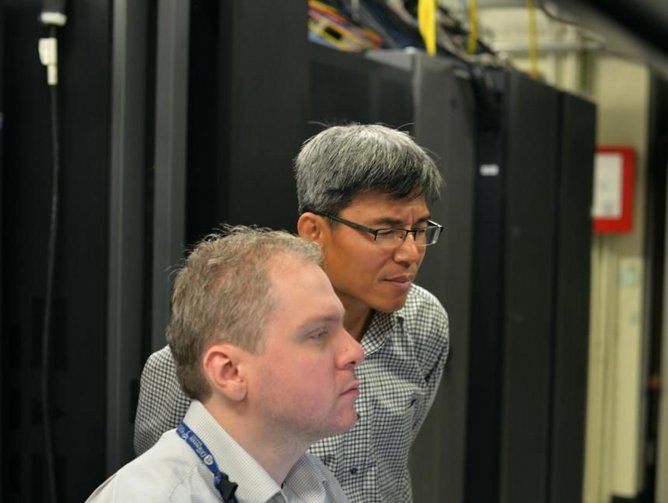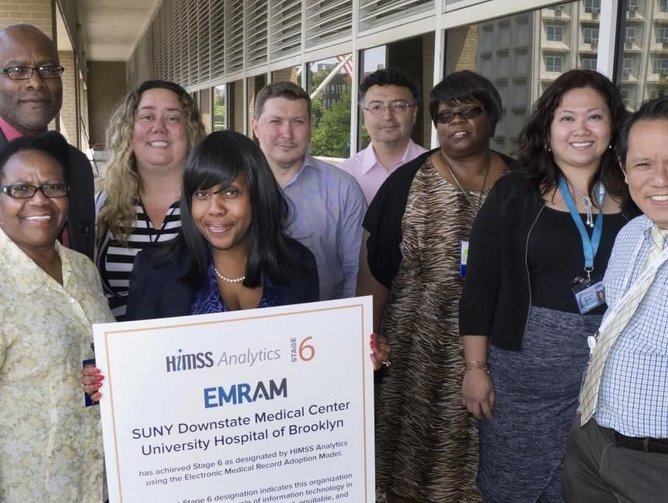How SUNY Downstate Medical Center is using digital transformation to emerge as one of the nation’s leading urban medical centers
The State University of New York Health Science Center, better known to locals as SUNY Downstate Medical Center, has consistently made its mark as one of the nation’s leading urban medical centers.
“We are geographically located in an urban area and provide healthcare for an underserved community,” explains Dr. Dilip Nath, Assistant Vice President and Deputy Chief Information Officer.
“We are the only academic medical center in Brooklyn. We provide education, research, and healing. We care about local people and we also offer students a world-class education in healthcare, nursing, and other medical related fields of study. Additionally, we offer leading research facilities and we house the first State BioTech incubator.
“Now the question is, how do we transform this and provide high-quality care that our community deserves?” he asks. “How do we maximize every dollar to provide excellent healthcare, training, and research?”
Healthcare for a digital age
Nath’s answer is simple. SUNY Downstate Medical Center is leveraging technology to automate, modernize, and transform its healthcare services. In doing so, the institution is the driving force for efficiency, business agility, and providing top-class healthcare to Brooklyn’s 2.6mn residents.
As an alumnus of the State University of New York himself, Nath’s devotion to the Institution is unquestionable.
The first of his family to relocate from Bangladesh to the United States, Nath has risen through the ranks from Director of IT, to Associate CIO, followed by Interim CIO, and finally to his current role today as AVP and Deputy CIO.
As a result, he has an inherent appreciation of the institution’s digital capabilities and understands what is needed to take it to the next level.
“It gives me an immense pleasure to give back to the organization that I went to myself and which teaches and educates hundreds of thousands of students throughout the state,” comments Nath.
Recognizing the significance of digital transformation, Nath has helped to design and implement many clinical and financial systems, including financial and statistical reports which provided the hospital and academic administration with greater accessibility to patient’s financial records.
What’s more, he also spearheaded the rollout of enterprise-wide applications such as imaging solutions and was instrumental in achieving meaningful use, rolling out electronic medical records (EMR), computerized physician order entry (CPOE), enterprise resource planning (ERP), cost accounting, revenue cycle, and ADT Systems. However, this is just the tip of the iceberg.
Data, cloud technology and more
SUNY Downstate Medical Center is now beginning the next stage of its digital transformation.
Working with IT firm Presido, the institution is preparing to redesign its entire network infrastructure to ready itself for the digital age of healthcare.
Such a modern network needs a modern data center and this is another technological feat which is going to help transform the healthcare and education enterprise, says Nath.
Ensuring the uptime of mission-critical operations is more important than ever with data center downtime costing around $8,000 per minute, according to an in-depth study by the Emerson Network Power and the Ponemon Institute.
This is something which SUNY Downstate Medical Center has taken on board and, as such, the medical center is exploring the use of cloud technology.
“The next thing that we're working on is taking the digital assets we currently have and morphing them into a private cloud solution,” says Nath. “This will provide a private, encrypted connection from our campus to the private vendors that we are working with, such as GAVS Technologies.
“If the network goes down, almost everything is down. The whole productivity comes to a halt and so this cloud solution is vital for our transformation,” he adds.
Accessible medical records
EMRs have become an up-and-coming trend in the healthcare landscape and it is a modern innovation which SUNY Downstate Medical Center hasn’t overlooked.
More beneficial than a paper record, this tool allows healthcare providers to track data over time, identify patients who are due for visits and screenings, and monitor how patients measure against vaccination and blood pressure readings, with the ultimate aim of improving quality of care.
Most importantly, it allows a patient’s health record to move with them, but this only the start of its capabilities, says Nath.
“We’re also looking at how we can improve and optimize EMR,” he notes. “We’re working with another partner called Infinite and they are providing a solution whereby it doesn't matter how many EMRs you have – when a patient shows up to your clinic, it will pull up their latest medical records. The whole goal is to modernize the healthcare we provide by automating our infrastructure and modernizing our workflow.
“Then the next question is: what should we do with all of this data?” he continues. “We need strong analytics, and so we are actually in the process of deploying solutions such as Tableau to achieve this. Then, in the future, we hope to use technologies such as artificial intelligence and predictive analytics so that we can not only provide reactive care, but also be predictive.
“There is currently a huge gap between the provider and the patient and all healthcare associates – that's exactly why we are optimizing our EMR,” he adds. “Integration is key in this. We need to integrate and exchange data amongst ourselves and with our patients and other care providers outside of our organization.”
Challenges in the health tech space
Bringing about a root-and-branch digital transformation is by no account an easy task, especially when the enterprise is partly responsible for the healthcare of Brooklyn’s 2.6mn residents.
However, this challenge is one the medical center has taken in its stride.
“Delivery of care is a challenge as a whole, especially being an urban area,” reflects Nath. “But transforming technology is much more challenging than in more developed areas because, for example, we can provide patient information through a portal, but when our patient goes home, some may not necessarily have a computer or wi-fi access.
“If we could change this, patients would not have to make a phone call or come and visit a clinic,” he adds. “They would be able to communicate with their physicians through telemedicine and telehealth tools. We could see more patients at home, rather than at our clinics. As much as we're pushing this information as an organization, there is a lot of work that we, and the government, need to do for the community itself.”
On top of the need to provoke deep change within communities, Nath says the healthcare space also needs to have a significant culture shift amongst healthcare staff.
“Employing these technologies is a challenge but it’s really about understanding the needs of our staff and how we can provide the technological solutions for the puzzles they need to solve,” he says. “That’s the key to success.
“Once they see the value of technology, it becomes much easier to deploy. Therefore, we take smaller steps, to pilot the technology and roll it out slowly – that's how you change the cultural barrier or shift to a success. There’s no quick win. I am more interested in sustainable growth that brings added value to the organization.”
Nath’s pride for SUNY Downstate Medical Center shines throughout our conversation.
This admiration and commitment to both the institution, its staff, and students also transcends throughout the center’s technology strategy, and it is this which is helping the medical center become a leading player in the healthcare space and serve the residents of Brooklyn.





